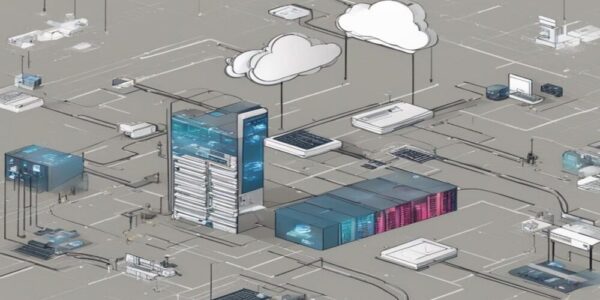Future of the Data-Centric Infrastructure
Introduction
In today’s fast-paced digital landscape, data has become the new oil, driving innovation and transformation across industries. As we move into an era defined by the rapid exchange of information and the growing need for data-driven decision-making, the infrastructure that supports this data becomes increasingly vital. This article presents a brief analysis into the future of the data-centric infrastructure, examining its implications, the role of emerging technologies, sustainability, artificial intelligence, and cloud computing, with a particular focus on all-flash data centers.
The Importance of Data and Storage Solutions
Data is at the heart of the digital age, and managing it effectively is crucial. Organizations rely on data to make informed decisions, understand customer behaviors, and enhance their operations. To handle the ever-increasing volumes of data, companies turn to efficient & simplified storage solutions from NetApp, Hitachi Vantara and Pure storage. These solutions not only provide efficient storage but also enable simplified data management, ensuring that critical information is accessible when needed. For instance, Hitachi Vantara recently unveiled VSP One to unify & further simplify data management from block, files to objects.
All-Flash Data Centers and Environmental Impact
Globally, data centers account for over 2% of total carbon emissions & by 2025 they will consume over 20% of the world’s electricity. Hence, one of the most significant transformations in data-centric infrastructure is the adoption of all-flash data centers. All-flash data centers, powered by advanced storage solutions, play a pivotal role in this endeavor by reducing the power requirements and space needed for storage, they contribute to energy efficiency and a smaller carbon footprint. One storage vendor even predicted of an All-flash data center growth & end of HDD’s sales by 2028. Netapp also taking focused approach to all-flash arrays by offering unified & dedicated block storage solutions.
* Click to Follow Voice of Ladakh on WhatsApp *
Thus, this transition to all-flash data centers is not just about enhancing performance; it’s also about accelerating the green revolution in data infrastructure.
The Impact of Generative AI and LLM
Artificial intelligence is reshaping data-centric infrastructure, and the way data is managed and analyzed. Generative AI and Large Language Models (LLMs) are on the rise across various industries in India, from banking, government to startups and IT-enabled services. These technologies automate complex tasks, facilitate decision-making, and enhance data analytics. Their potential to drive efficiency and innovation is transforming the way organizations approach data-centric operations.
With this approach, Axis and HDFC banks in India are planning to leverage LLMs for tasks like chatbots and customer service, while companies like Nutanix started offering GPT in a Box dedicated AI nodes simplifying adoption of Generative AI at the core or edge sites.
These AI advancements are enhancing efficiency, customer experiences, and productivity across sectors.
The Influence of Cloud Computing
Cloud computing is no longer a buzzword; it’s an integral part of data-centric infrastructure. It’s transforming how data is stored, accessed, and processed, and it’s playing a pivotal role in the convergence of hybrid and multi-cloud solutions across industries, particularly in India. Google already in plan to expand its data center footprint in India including its recent partnerships with the likes of Jio & Airtel to leverage 5G adoption, expansion in the Indian market. Microsoft also setting up its 4th data center in India. These growths will enable organizations to scale their data infrastructure, leverage self-service models by these cloud vendors, and gain more flexibility in their operations.
Conclusion
Data’s critical role in the modern world necessitates advanced storage solutions, such as those provided by Netapp, Pure Storage, and Hitachi. The adoption of all-flash data centers not only enhances performance but also contributes to sustainability and reduced carbon footprints, aligning with global environmental goals.
Generative AI and Large Language Models drive efficiency and innovation, while cloud computing offers scalability and flexibility. As organizations adapt to these changes, they are poised to unlock the true potential of their data, driving progress and innovation across industries. With the Union budget 2022 granting infrastructure status to data centers is significantly going to accelerate the expansion & development of DC’s with growing investment opportunities in the market.



0 Comments